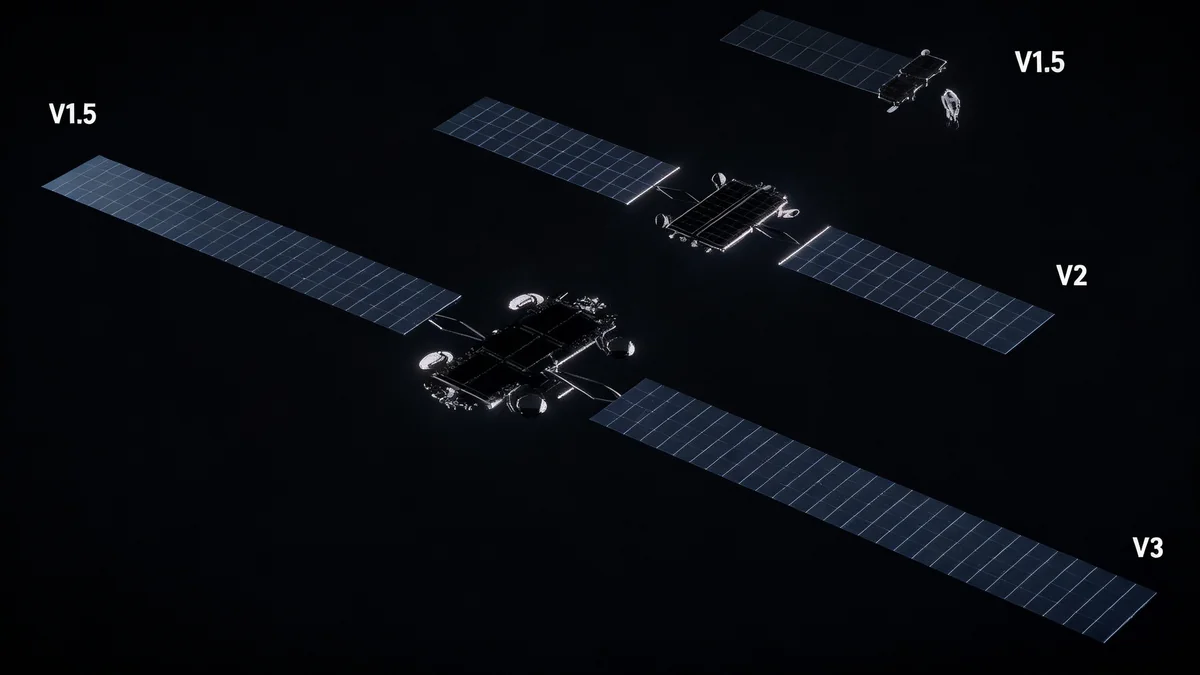A recent study by European researchers highlights that the primary obstacles to deploying a large-scale space-based solar power (SBSP) system are not in orbit, but on the ground. The availability of suitable land for receiving stations, rather than space technology, is identified as the most significant limiting factor on how much energy could be beamed to Earth.
The paper calculates the maximum potential power from a satellite constellation in geostationary orbit, revealing that even under the most conservative, real-world constraints, SBSP could still contribute a meaningful portion of global electricity needs.
Key Takeaways
- A new study suggests Earth-based logistics, not space technology, are the main hurdles for space solar power.
- The number of possible power-beaming satellites drops from 3,600 to 364 when accounting for land use and infrastructure.
- Even with these limitations, a constrained SBSP network could supply up to 3% of global electricity demand.
- The study uses conservative estimates for satellite spacing, land availability, and power conversion efficiency.
Calculating the Limits of Orbital Power
The concept of collecting solar energy in space and transmitting it wirelessly to Earth has gained significant momentum, especially following successful demonstrations like Caltech's Space Solar Power Project. To understand the true potential of this technology, a team of Italian and German researchers developed a model to calculate the maximum energy output of an SBSP constellation.
Their analysis focused on satellites in geostationary orbit (GEO), an ideal location for constant solar exposure. The core of their research involved a two-step process: first, determining how many satellites could safely operate in GEO, and second, estimating how much power each could realistically deliver to the electrical grid.
Defining the Orbital Capacity
To determine the number of satellites, the researchers established a baseline safety measure called the Minimum Distance Angle (MDA). They set this at 0.1 degrees of angular separation between each satellite to prevent collisions and radio frequency interference. This conservative figure provides each satellite with an operational buffer of 147 kilometers, far larger than the satellite itself.
Based on this foundation, the study explored four increasingly restrictive scenarios to model a realistic deployment.
What is Geostationary Orbit?
Geostationary Earth Orbit (GEO) is a specific orbit approximately 35,786 kilometers (22,236 miles) directly above the Earth's equator. Satellites in this orbit match the Earth's rotation, making them appear stationary from the ground. This is ideal for continuous power transmission to a fixed point.
Four Scenarios for Satellite Deployment
The study's scenarios progressively add real-world constraints, showing how the theoretical maximum number of satellites decreases with each logistical challenge considered.
- Scenario 1: Theoretical Maximum: With only the 0.1° MDA as a constraint, a full 360° orbit could hold 3,600 SBSP satellites. This represents an ideal, empty-sky scenario.
- Scenario 2: Existing Traffic: Acknowledging that GEO is already populated, this scenario slots SBSP satellites between existing ones while maintaining the MDA. This reduces the potential number to 2,509 satellites.
- Scenario 3: Land Availability: The first ground-based constraint is introduced. Power is received by large antennas called rectennas, which must currently be on land. The study limits placement to land within 30 degrees of the equator, where GEO satellites are positioned overhead. This geographical limitation drastically cuts the number of possible sites, lowering the satellite count to 1,771.
- Scenario 4: Infrastructure Access: The final and most restrictive scenario assumes rectennas can only be built in areas with a population density of at least 3,000 people per square kilometer. This acts as a proxy for regions with robust electrical infrastructure capable of handling and distributing the incoming power. This constraint causes the number of viable satellites to plummet to just 364.
The final figure of 364 satellites represents a nearly 90% reduction from the theoretical maximum, illustrating the profound impact of ground-based logistics.
Estimating Power Delivery to the Grid
After determining the number of satellites, the researchers calculated their potential energy output. They made several key assumptions based on current technology, including a solar panel area of 10 square kilometers and a solar cell efficiency of 20%.
Under these conditions, each satellite could collect an immense 272 gigawatts (GW) of raw solar energy in space. However, the process of converting this energy to microwaves, transmitting it through the atmosphere, and converting it back to electricity on the ground involves significant losses.
The study conservatively estimates that after all conversion and transmission inefficiencies, each satellite would deliver 1 GW of usable power to the grid.
This represents a conversion efficiency of less than 0.4% from the energy collected in space to the power supplied on Earth. While this figure is extremely conservative, it provides a cautious baseline for evaluating the system's potential.
The Role of Rectennas
A rectenna, or rectifying antenna, is a special type of antenna used to convert electromagnetic energy, like microwaves, into direct current (DC) electricity. For SBSP, these would be vast ground arrays, potentially spanning several square kilometers, designed to safely and efficiently receive the energy beamed from orbit.
A Significant Contribution to Global Energy
Despite the severe constraints and conservative estimates applied in the study, the potential of space-based solar power remains substantial. In the most restrictive scenario with only 364 satellites, the constellation would generate 364 GW of clean electricity.
This amount is enough to cover approximately 3% of the world's total electricity consumption. While not a complete solution to global energy needs, a 3% contribution from a single new technology would be a transformative development for energy markets and climate goals.
Are the Assumptions Too Conservative?
Critics of the study, and proponents of SBSP, might argue that the paper's assumptions are overly cautious. For example, the estimated 99.6% energy loss between space collection and grid delivery is a significant hurdle that future technological advancements could reduce.
Furthermore, the study's constraints on rectenna placement may be too rigid. Future innovations could allow for:
- Rectennas built over water (offshore platforms).
- Integration of rectennas with agricultural land (agrivoltaics).
- Deployment in remote, sparsely populated areas with new transmission infrastructure.
Even so, the research provides a valuable, grounded perspective. By focusing on practical, Earth-based limitations, it frames the key challenges that engineers and policymakers must address to make space-based solar power a reality. The study confirms that while the vision is ambitious, its potential benefits justify the growing global interest and investment in the technology.





